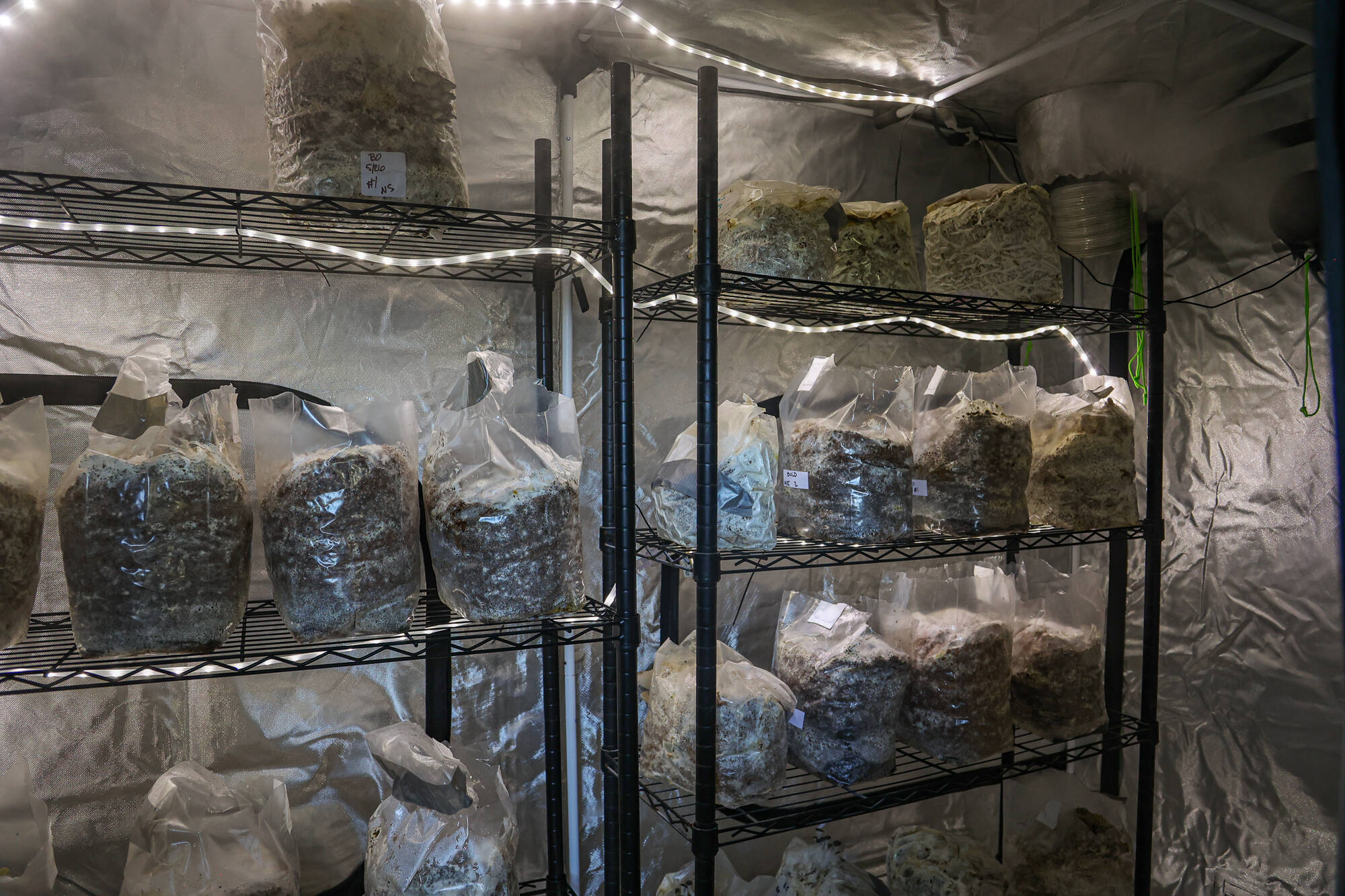Oak Harbor’s Willow Ranch, known for its horse riding lessons, has added a new feather to its cap—growing mushrooms.
Whidbey Island Mushrooms opened shop in April, bringing gourmet mushrooms and microgreens to Whidbey Farm and Market, the Coupeville Farmers Market and the Whidbey Island Grown Cooperative food hub.
Right now, owner Melissa Tucker’s focus is on blue oyster mushrooms, which grow in overlapping clusters of vibrant blue patties that turn gray as they mature, something that looks like it provides backdrop on alien planets or shelters dancing fae folk in the woods.
Blue oysters grow from mycelium, white filaments, to harvest in just three days. Still, it’s not fast enough to meet the demand.
“They’re so pretty,” Tucker said. “People buy them because they are pretty.”
They taste pretty good, too. Tucker puts them in everything, like stroganoff, scrambled eggs, roasted vegetables, onions and garlic. Even her husband and co-owner, David, who doesn’t like mushrooms, will eat some of the blue oysters.
Blue oysters have a unique texture, David said. While most mushrooms have a tofu-like sponginess, blue oysters are a tad harder.
“They still have that same kind of earthy flavor, but it’s not like you’re chewing on a piece of gum,” he said.
Whidbey Island Mushrooms has been in the works for years, said Tucker, but ranch life got in the way. In late 2022, she needed back surgery at the same time her new piglet, Chuck, broke her foot. Now, the farm is up and running and continually expanding.
The spores start in an incubation tent for a week to allow the mycilium to spread throughout the substrate, Tucker said. Then, she moves them to a second tent with a humidifier and specialized lighting. In just three days, the mushrooms are ready for harvest.
Next on Tucker’s docket are golden oysters, lion’s mane and maitaki. While oyster mushrooms grow quickly enough to overcome the bacteria, for the latter species the substrate must be sterilized.
Tucker chose these species because they are compatible with her current set-up. Shiitakes, for example, are pickier; they require their own temperature and can take years to grow.
With over 1,500 mushroom species in the Pacific Northwest and fruitful forests famous for forageable fungi, Tucker lives in the heart of what many consider a mushroom mecca. But not everyone has the time to go out and collect for themselves, and the market is wide open for some species, such as maitaki.
She does take advantage of such a nurturing environment. After a summertime harvest, when she dumps her substrate, she finds new blue oysters growing from the pile outside.
Tucker can be reached for mushrooms at whidbeyislandmushrooms@gmail.com and for horse riding at misshorsepwr@gmail.com.



